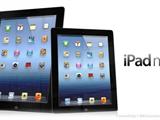Apple's iBeacon is not just for location services, it can be applied in retail stores
According to the report of *Business Week*, as expected, on October 23rd, Apple launched new iPads and MacBooks at its product event in San Francisco. These devices were equipped with better processors, clearer screens, and longer battery life. However, the more significant news had already surfaced over a month earlier when Apple released iOS7.
In this mobile operating system, there is a new technology called iBeacon that can pinpoint your location with an accuracy of just a few feet. iBeacon is software that enhances the location-tracking services of iPhones, iPad Minis, or any device running iOS7. For retailers eager to turn smartphones into sales tools, it provides a way to quickly target consumers passing by their stores to deliver ads and other messages.
For Apple, this represents an opportunity to gather valuable shopping data and establish a dominant mobile payment platform standard in retail. Apple declined to comment on this matter. Hari Gottipati, an independent technology consultant based in Phoenix, said: "The momentum of iBeacon is just beginning to show, but its growth rate will exceed anyone's imagination."
Before the introduction of iBeacon, iPhones and other Apple mobile devices relied on GPS and Wi-Fi triangulation to locate users' positions. These technologies remain effective and continue to be part of iOS, but their accuracy is only around 30 feet.
This level of accuracy works fine if you're entering an airport, as iOS Passbook can assist users. However, in smaller spaces like stores, GPS and Wi-Fi are not very useful. Thanks to the new ubiquitous wireless technology, Bluetooth LE (Low Energy), iBeacon can more accurately determine the position of a device.
Bluetooth LE solves many problems that other tracking technologies cannot. GPS signals degrade when they encounter walls and other objects, cellular triangulation requires strong wireless signals, and standard Bluetooth rapidly drains phone batteries. Bluetooth LE can run continuously, becoming visible when traditional Bluetooth-enabled devices come close, while consuming very little power.
In addition to detecting the presence of a device, the software can also send you messages. Gottipati said: "With iBeacons, you can offer customers more personalized products based on their preferences, history, or current location. The more personalized it is, the greater the chance of making a sale." Besides offering coupons, iBeacon can also store credit card information for payments.
In recent years, people believed that the next important location-based service technology would be Near Field Communication (NFC), which has already appeared in some smartphones and tablets running Google's Android operating system. NFC allows you to tap your phone to a cash register to complete a payment and is mainly used by Nokia, Philips, and Sony.
However, besides the fact that not all devices support NFC due to chip requirements, another disadvantage is its extremely short range, making it useful only for payments within stores. It also requires cooperation from credit card companies. In contrast, with iBeacon, retailers can become part of the experience for every user who owns a new iPhone or iPad or has updated these devices.
Steve Cheney, an independent technology consultant based in New York, said: "Bluetooth LE is much better. Every iPhone from two years ago has it, and if Google updates its software, Android can also support it." Retailers need to invest some money to make their spaces more iBeacon-friendly, but the cost is not high.
Gottipati said that the coverage area of iBeacon is approximately 84,000 square feet. A typical Macy's store is about 175,000 square feet, requiring two or three iBeacon transmitters. Third-party manufacturers such as Estimote sell sets of three for $99.



